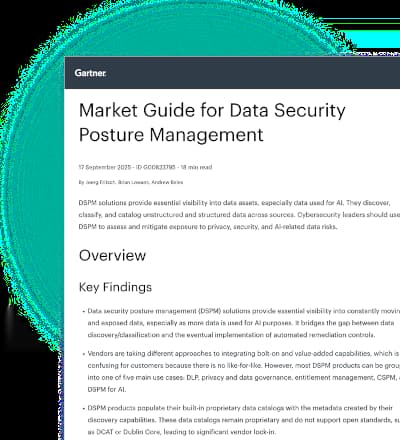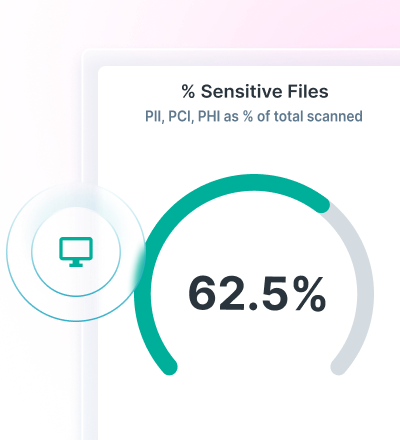
منع هجمات البرامج الضارة والتصيد الاحتيالي من الوصول إلى المستخدمين.
الحفاظ على أمان صندوق الوارد من التهديدات المتطورة القائمة على البريد الإلكتروني. يعزز Forcepoint Email Security قدرات الأمان لمقدمي خدمات البريد الإلكتروني المشهورين مثل Microsoft Exchange لاكتشاف رسائل البريد الإلكتروني المشكوك فيها والمحفوفة بالمخاطر وحظرها قبل أن تتاح لهم فرصة استخدامها.
لماذا Forcepoint Email Security؟
تحديد التهديدات وحظرها
إضافة طبقة دفاع متقدمة لإغلاق الثغرات الأمنية المهمة التي تم إنشاؤها بواسطة الفلاتر التقليدية القائمة على القواعد من عملاء البريد الإلكتروني المشهورين، والتي يمكن أن تفوت التهديدات المتطورة والمتفسقة التي تستهدف الأنظمة والبيانات الحساسة وبيانات اعتماد المستخدمين.
النشر في المكان الذي تريد
تدعم Forcepoint Email Security النشر في الخدمة السحابية أو الهجين أو في مكان العمل، مما يتيح للمؤسسات تخصيص الحماية بناءً على احتياجاتها ومخاطرها الفريدة.
الإخطار في الوقت الفعلي
يتلقى المستخدمون والمسؤولون رؤية كاملة لأحداث أمان البريد الإلكتروني الواردة من خلال التنبيهات التلقائية وإعداد التقارير التفصيلية.
إيقاف التصيد الاحتيالي والبرامج الضارة
مراجعة الروابط الضارة والمرفقات المشكوك فيها وعناوين المرسلين المحتملة لمنع برامج الفدية والتصيد الاحتيالي وغير ذلك من التهديدات المتقدمة.
الأسئلة الشائعة
ما هو بالضبط "برنامج أمن البريد الإلكتروني" الذي يتجاوز ما يوفره لي Microsoft 365/Google بالفعل؟
برامج أمن البريد الإلكتروني هي منصات تزيل البريد الإلكتروني الضار/غير المرغوب فيه (التصيد الاحتيالي وBEC والبرامج الضارة والبريد العشوائي المزعجة) وتضيف ضوابط مثل DMARC والتحقيق والمعالجة. تعمل Forcepoint على تعزيز عناصر التحكم الأصلية من خلال الكشف السلوكي والتغطية والحماية من الاحتيال لوقف التصيد الاحتيالي/البرامج الضارة، كما يمكنها العمل جنبًا إلى جنب مع الأدوات الحالية أو استبدالها.
كيف تتعامل Forcepoint مع التصيد الاحتيالي وBEC والبرامج الضارة Zero-day على وجه التحديد؟
تجمع Forcepoint بين الكشف السلوكي، وتنظيم عناوين URL والمرفقات، والحماية من الاحتيال لتحديد التهديدات المتقدمة وحظرها (بما في ذلك يوم صفر).
هل تغطي Forcepoint موافقات DLP وتشفير البريد الإلكتروني؟
نعم. يعد أمن البريد الإلكتروني من Forcepoint جزءًا من منصة موحدة لأمن البيانات. يمكنك فرض سياسات شاملة بشأن المحتوى والمرفقات والمستلمين؛ وتطبيق سياسات متسقة عبر البريد الإلكتروني والويب وتطبيقات السحابة ونقاط النهاية؛ واستخدام الحجر الصحي الأصلي والتشفير وسير العمل الذي يوافق عليه المديرون. كما توفر Forcepoint DLP مخصصًا للبريد الإلكتروني (مستضاف على السحابة ووقت تشغيل 99.99%) مع مكتبة كبيرة ومصنفة وعمليات عمل للموافقة/التشفير.
ما خيارات النشر؟
يمكنك نشر Forcepoint Email Security في تكوينات السحابة أو الهجينة أو في تكوينات مبنية بالكامل، واختيار ما يناسب مخاطرك وبنيتك. هناك تكامل أصلي مع Microsoft Exchange، كما توفر الخدمة تنبيهات تلقائية وتقارير مفصلة لتوفير الرؤية.
هل يتكامل هذا مع بيئة Microsoft 365 وعملياتنا الحالية؟
نعم. تتكامل Forcepoint بشكل أصلي مع Microsoft Exchange، وتدعم سير عمل مألوفة للمستخدم/المسؤول (الحجر الصحي والتشفير وموافقات المديرين)، ولا تتطلب وكلاء من نقاط النهاية. يساعد ذلك على تقليل إدارة التغيير مع منح فرق الأمن مزيدًا من التحكم.
كيف يبدو تأثير المسؤول/المستخدم؟ التنبيهات والتقارير والضبط والرعاية المستمرة؟
يحصل المسؤولون على إشعارات في الوقت الفعلي وتقارير مفصلة؛ ويمكن جدولة التقارير وإرسالها بالبريد الإلكتروني في وقت متأخر.
هل تؤيد TLS وضوابط أمن النقل التي يمكننا تطبيقها لكل اتصال؟
نعم. يمكن لـ Forcepoint Email Security تعزيز TLS بمستويات أمان قابلة للتكوين (على سبيل المثال، Verify + CN) وقوة التشفير (128/256 بت)، مع إرشادات حول اختبار/التحقق من صحة TLS الصادرة. إذا كانت السياسة تتطلب TLS ولم تكن متوفرة، فسيتم رفض الرسائل بدلاً من إرسالها بوضوح.










